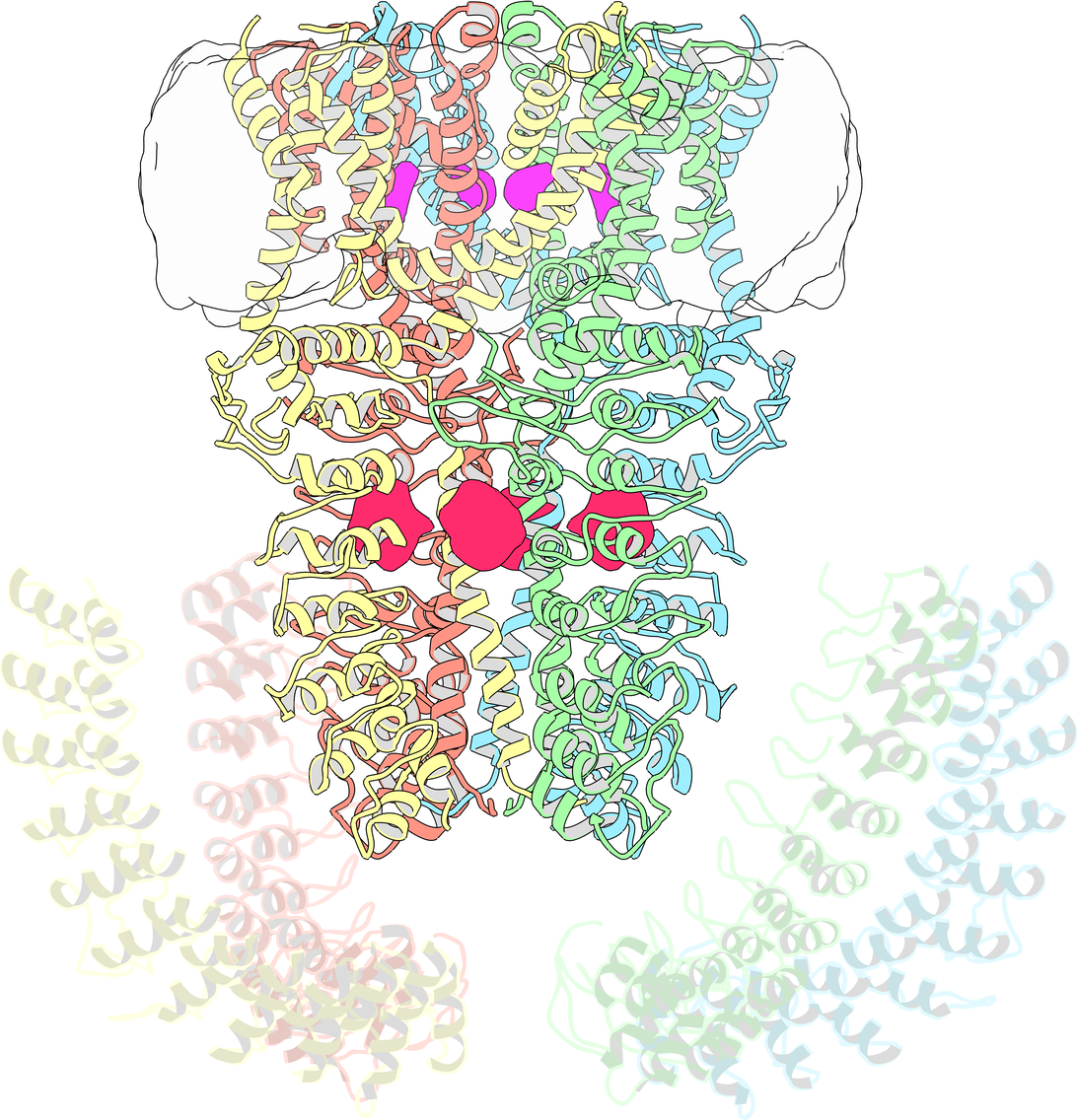
Active
View Entry | Cryo-electron microscopy revealing the "wasabi receptor"3747| The TRPA1 protein is responsible for the burn you feel when you taste a bite of sushi topped with wasabi. Known therefore informally as the "wasabi receptor," this protein forms pores in the membranes of nerve cells that sense tastes or odors. Pungent chemicals like wasabi or mustard oil cause the pores to open, which then triggers a tingling or burn on our tongue. This receptor also produces feelings of pain in response to chemicals produced within our own bodies when our tissues are damaged or inflamed. Researchers used cryo-EM to reveal the structure of the wasabi receptor at a resolution of about 4 angstroms (a credit card is about 8 million angstroms thick). This detailed structure can help scientists understand both how we feel pain and how we can limit it by developing therapies to block the receptor. For more on cryo-EM see the blog post Cryo-Electron Microscopy Reveals Molecules in Ever Greater Detail. | | Public Note | | | | | Internal Note | | Researchers gave permission for public use:
Dear Carolyn,
Absolutely. I will send you an image shortly. Thanks for including our work.
best,
Yifan
************************************************************
Yifan Cheng, Ph.D.
Howard Hughes Medical Institute
University of California San Francisco
Department of Biochemistry and Biophysics
Mission Bay, Genentech Hall, MC 2240
600 16th Street, Room S472D
San Francisco, CA 94143, USA
Phone: 1-415-514-9707 (office), 1-415-514-9708 (lab), Fax: 1-415-514-4145
email: ycheng@ucsf.edu
website: http://cryoem.ucsf.edu; https://www.hhmi.org/scientists/yifan-cheng
From: "Beans, Carolyn (NIH/NIGMS) [C]"
Date: Friday, January 15, 2016 at 8:32 AM
To: Yifan Cheng
Subject: Covering Your Research in NIGMS's Biomedical Beat Blog
Dear Dr. Cheng,
In honor of Nature Methods naming cryo-EM the ?Method of the Year? for 2015, we?re working on an article for our Biomedical Beat blog that highlights a couple of NIGMS-funded advances that were made possible because of this technology.
We?d like to include an image of the TRPA1 ion channel structure that you describe in your 2015 Nature paper. Do you have an image we could use? It doesn?t have to be one that actually appeared in the publication. If you do have an image to share, would you give us permission to also include it in our online collection of research-related images? Images and videos in this gallery are made available for educational, news media, or research purposes, provided that users credit the source of the image, i.e., you.
We?d like to get this post up as soon as possible so, if at all possible, I?d appreciate it if you could get back to me by the end of today. Thanks for your help!
Best,
Carolyn
Carolyn Beans, Ph.D.
Science Writer (contractor)
National Institutes of Health/NIGMS | | | Keywords | | | | | Source | | Jean-Paul Armache, UCSF | | | Date | | 2016-02-02 00:00:00 | | | Credit Line | | Jean-Paul Armache and Yifan Cheng, HHMI, UCSF | | | Investigator | | Yifan Cheng, HHMI, UCSF | | | Record Type | | Illustration | | | Topic Area(s) | | ;#Chemistry, Biochemistry, and Pharmacology;#Molecular Structures;#Tools and Techniques;# | | | Previous Uses | | | | | Status | | Active | |
| | View All Properties | | Edit Properties |
|
